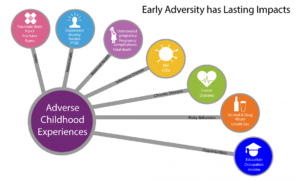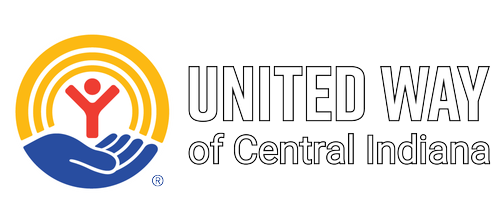Men IN Action and Sheltering Wings have built our prevention and education efforts around modeling and instilling the 40 positive supports and strengths that young people need to succeed.
The 40 Developmental Assets Framework was identified by Search Institute, an organization dedicated to helping young people reach their potential. Half of the assets focus on the relationships and opportunities children need around them: at home, at school and in their communities. The other half focus on the social and emotional strengths, values and commitments that are cultivated within them.
To learn how you can be an asset-builder, register for an upcoming training or contact Melissa at (317) 386-5061.
We’ve provided a brief overview of the categories below. For much more information and some great resources, visit search-institute.org.
EXTERNAL ASSETS
 Support
Support
Young people need to have people all around them who love them, invest in them, protect them and accept them. When children grow up understanding they are protected by a safety net of people who love them, they can more fully embrace who they are and step into who they were made to be.
 Empowerment
Empowerment
Young people need to know they are appreciated and valued and that they have strengths and gifts to offer to the world around them. Empowerment is what results when children understand the people around them see them, protect them and respect them.
 Boundaries and Expectations
Boundaries and Expectations
Children won’t admit they like rules. However, clear rules, boundaries and expectations are imperative for children. In fact, clear rules – along with an understanding of the consequences of breaking them – enable young people to feel secure and encourage them to do their best.

Constructive Use of Time
The whole world is a classroom for growing minds. Children need to be given ample opportunities outside of the classroom – and outside of the glare of their screens – to expand their horizons, to discover new passions, to develop new interests and to learn new skills.
INTERNAL ASSETS
 Commitment to Learning
Commitment to Learning
Every child can learn but not all children learn in the same way or at the same pace. All young people need to develop a sense of the importance of learning and how it positions them to make the most of their opportunities. And, they need to grow in understanding of and belief in their own unique abilities.
 Positive Values
Positive Values
Children need guidance as they formulate a strong, positive, consistent and coherent sense of personal values. These values will guide them thorughout their lives as they make big decisions and choose what they’ll involve themseves in and what they’ll avoid.
 Social Competencies
Social Competencies
Young people need to have ample opportunities to develop the skills they need to be able to relate to and intereact with others. They need to develop the internal strength to make difficult decisions that may affect others. And, they need to develop the resilience to cope with change.
 Positive Identity
Positive Identity
Young people need to have opportunities to grow in their understanding of their unique traits and abilities and in their belief in their own self-worth. Children with a strong sense of identity are empowered; they know they have control over their reactions to what happens to them and around them.
he 40 Developmental Assets® may be reproduced for educational, non-commercial uses only. Copyright ©1997 Search Institute®, 3001 Broadway Street NE, Suite 310, Minneapolis MN 55413; 800-888-7828; www.searchinstitute.org. All rights reserved.

 Support
Support Empowerment
Empowerment Boundaries and Expectations
Boundaries and Expectations
 Commitment to Learning
Commitment to Learning Positive Values
Positive Values Social Competencies
Social Competencies Positive Identity
Positive Identity


